The Advanced Light Source: Where Physics Lets Science Happen
Inside the domed nucleus of Lawrence Berkeley National Laboratory, nestled in the hills above Berkeley California, is a machine designed to shine more than a billion times brighter than the sun. The Advanced Light Source is a football field sized particle accelerator where 2,000 researchers a year flock to when their experiments need intense x-rays. It’s a big facility, full of cutting edge research and astounding engineering.
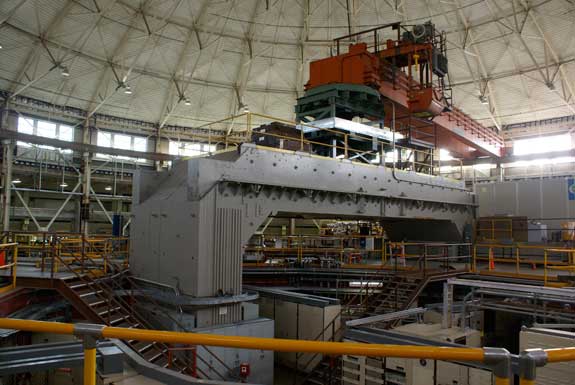
Walking around the periphery of the machine is like walking though the set of a science fiction movie. Large computer banks with blinking displays are everywhere. Every few feet are alcoves full of shiny vacuum chambers and wires snaking everywhere. The narrow corridors are constantly abuzz with activity, scientists running from experiment to experiment, technicians moving chunky pieces of equipment around on handcarts. In fact Hollywood has come calling. Director Ang Lee used the facility as a set in the film adaption of “Hulk” where Bruce Banner has his accident that turns him into a towering colossus of green fury.
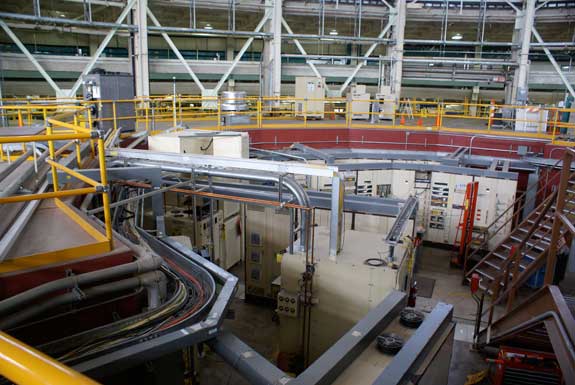
What’s striking standing in the middle of it is how all the controlled chaos you see is not just set dressing and everything there has a purpose. Every knob adjusts a setting somewhere, every wire leads to an instrument and every indicator has been carefully calibrated. The complexity of the machine is truly mind-boggling.
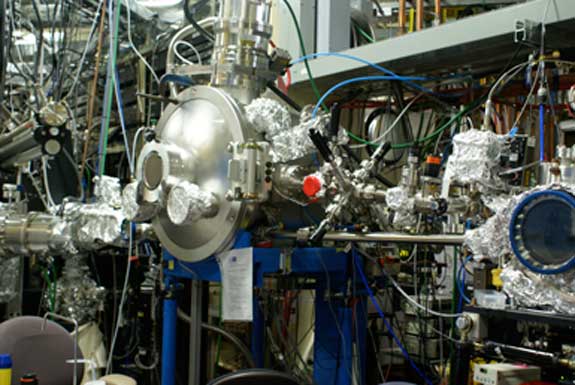
Scientists use the ALS as a powerful source for pulses of light, usually x-rays or ultraviolet light. In order to reap these brilliant flashes, the machine has start by whipping electrons around at nearly the speed of light inside of a vacuum emptier than deep space.
The heart of the ALS is its “electron gun,” which fires electrons down towards the linear accelerator. At its core is a small button sized sample of material, saturated with a material similar to tungsten. When it’s heated up, electrons boil off and get pulled toward the linear accelerator.
The negatively charged electrons fly though a beam tube, suspended in a magnetic field all the while pulled towards a positively charged plate along the pipe. Just as the electron bunch reaches the plates, its charge switches from positive to neural, letting the electrons coast through. After they’ve passed through the plate, it switches to a negative charge, pushing the electrons towards the next plate, which is positively charged. The process repeats until the electrons are traveling at 99.99997 percent the speed of light. The timing has to be perfect or otherwise it could end up slowing up the electrons. Electrons shoot across the room in the tube, essentially travelling from zero to almost the speed of light in less time than it takes to blink an eye.
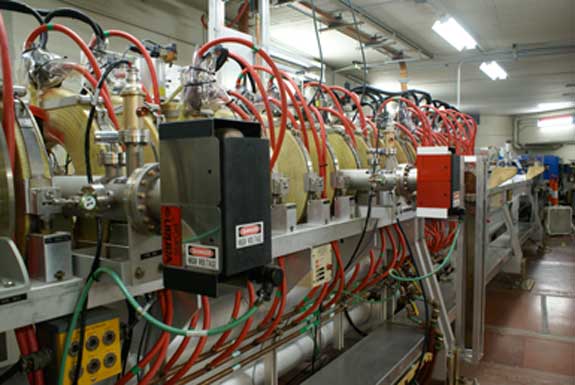
At the same time, the electrons pass through a series of focusing magnets to make the beam as thin as possible. The beam passes through quadrupole electromagnets, which squeeze the electrons to a thin beam about the width of a human hair.
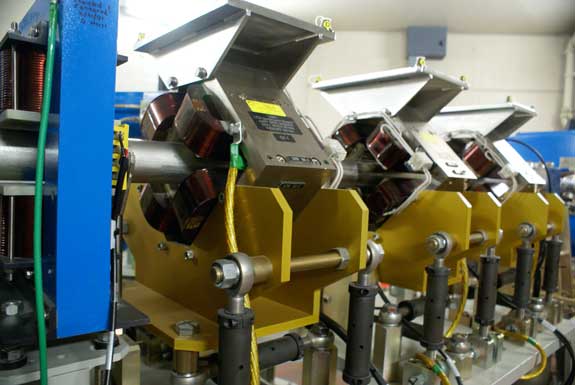
After the beam is focused, it’s redirected into a small booster ring where it’s further refined and energized before being dumped into the 200-meter long storage ring where scientists can start harvesting x-rays. Though it’s called a storage ring, it’s not exactly round. Sections of straight pipe carrying the electrons through bend magnets, which redirect the beams around a slight corner, making the 60-meter diameter storage ring
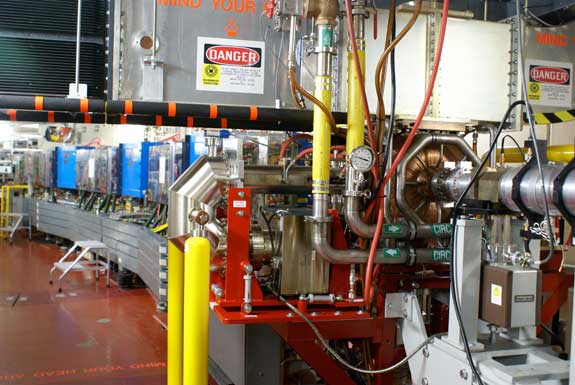
When charged particles electrons change directions, they emit energy in the form of light. Every time a bunch of electrons in the ALS go around a bend magnet, they emit radiation. Because they’re traveling at near the speed of light, they give off give off a lot of energy in the form of x-rays. These photons are diverted and sent down along 12-meter long beam lines, 38 in total, that radiate out from the storage ring like spokes on a bicycle wheel, bringing the x-rays to the waiting scientists.
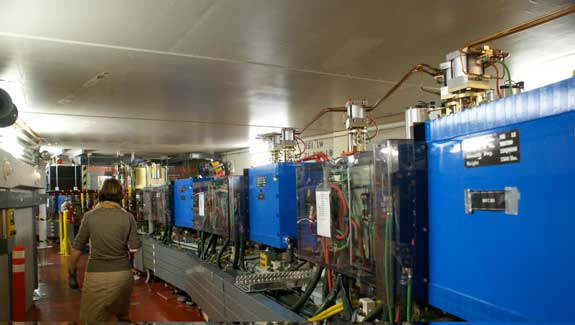
The sharper the turns, the more energetic the x-rays emitted by the electrons, which is why at a few points along the storage ring are “superbend” magnets. These extra sharp turns produce higher energy x-rays. To protect the researchers when the machine is operating the entire storage ring is encased inside a round bunker made of seventeen thousand pound blocks.
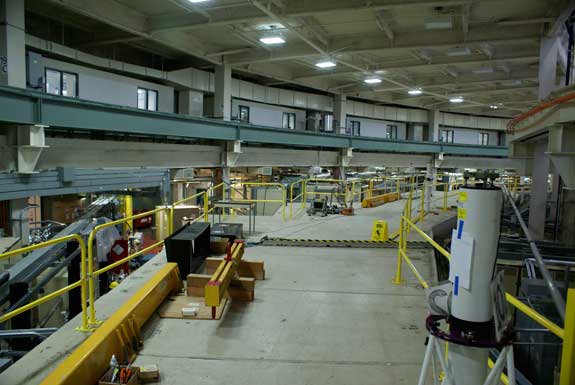
If a researcher needs a really bright source of x-rays, they can hook up to a beam line stemming from a wiggler. Wigglers are made up of powerful opposing magnets along the storage ring. The ones at the ALS are about 24 feet long and weigh about 40,000 pounds. Most of this structure is just to keep the strong magnets from sticking to each other. When electrons travel between the two rows of magnets in a wiggler, they quiver back and forth. Each time they do they emit x-rays that collects and gets released in a bright burst. In fact the ALS is the brightest source of soft x-rays in the world.
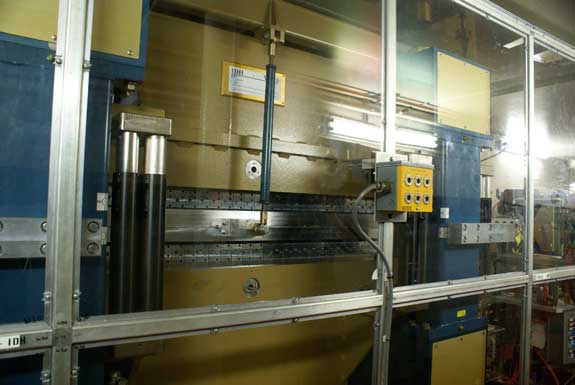
The engineering precision that went into building the ALS is extraordinary. Everything has to be perfectly aligned all the time, which poses a problem because Berkeley national labs is located less than half a mile from the geologically active Hayward fault line. To keep the electron beam aligned, every piece of equipment is built on top of special pins to absorb any tremors from the nearby fault. The engineers at the lab claim that the surveying and alignment is so sensitive that they are able to detect the change in tilt of the continental shelf when the tide goes in and out.
These x-rays are the real product of the ALS. Scientists use the beams of x-rays for a wide variety of research. The short wavelength of x-rays lets scientists see things in finer detail than would be possible with ordinary visible light. X-rays can also pass straight through some materials, which is why they’re so popular in doctor’s offices. This way when scientists want to see inside of a living organism or inside an ancient artifact, x-rays can peer through what would otherwise be impossible to see. The difference is that the bright beams of x-rays produced by the ALS can be as much as a million times more intense than anything found at a doctor’s office.
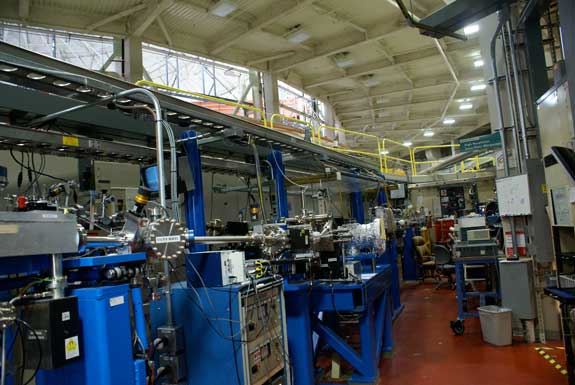
At the ALS, numerous scientists are working on decoding how proteins fold and behave. They do this by shining the bright x-rays onto proteins and creating a picture of them by looking at how the rays scatter. A computer can then analyze the pattern made by the protein and extrapolate what the protein looks like. Picture a cascade of sand flowing through someone’s fingers, and then recreating the precise shape of that hand by only looking at where the sand fell. Scientist Peter Zwart at the Berkeley Center for Structural Biology showed me a simulation of one of the proteins he’d been working on.
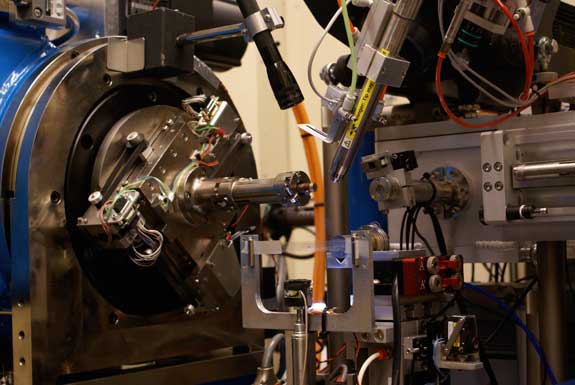
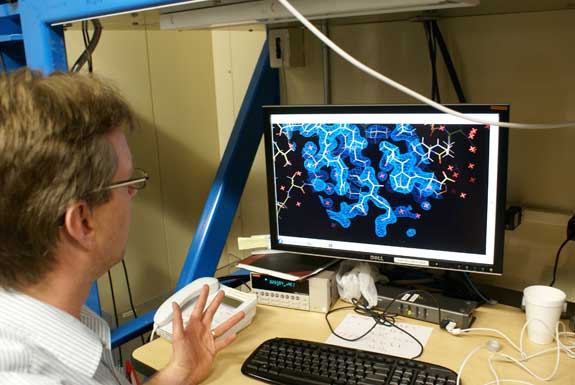
Other science done at the ALS includes research into computer chip imaging, renewable energy related research, chemical analysis and imaging the molecular processes inside a cell. In many ways, that’s what’s so amazing about the Advanced Light Source; the physics that goes into the research at the ALS is just as impressive as the science coming out of it.














